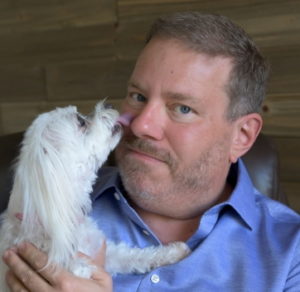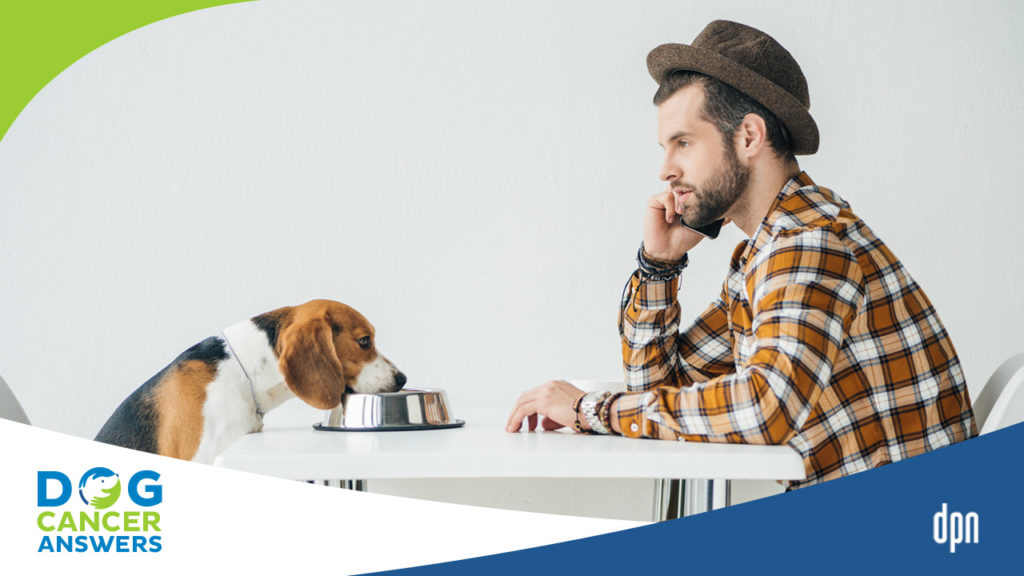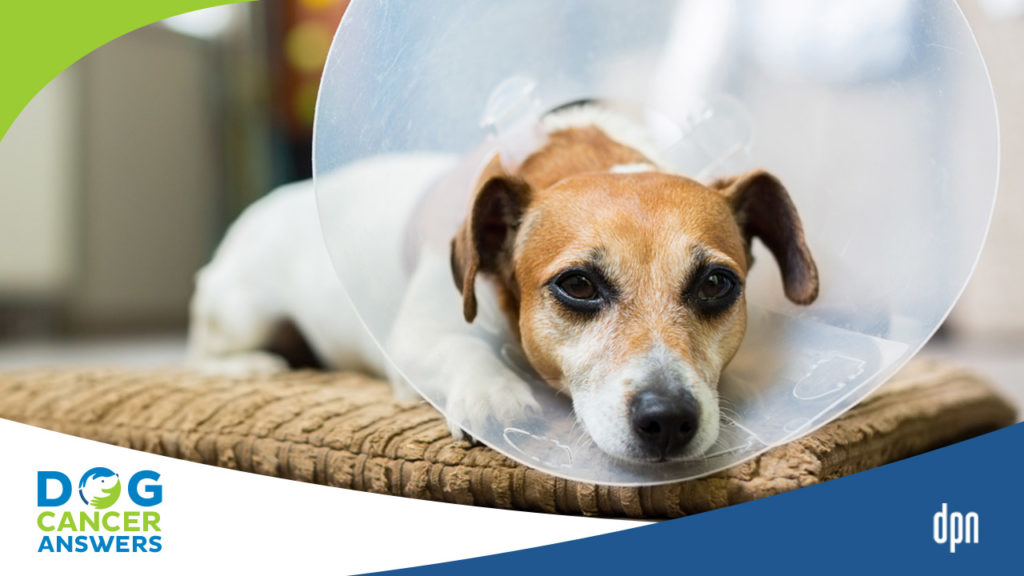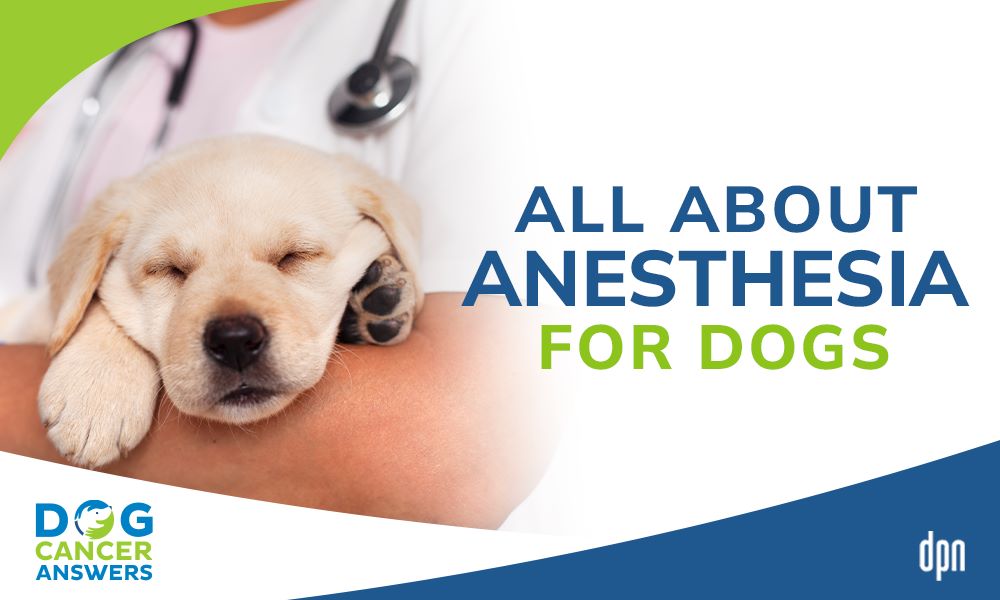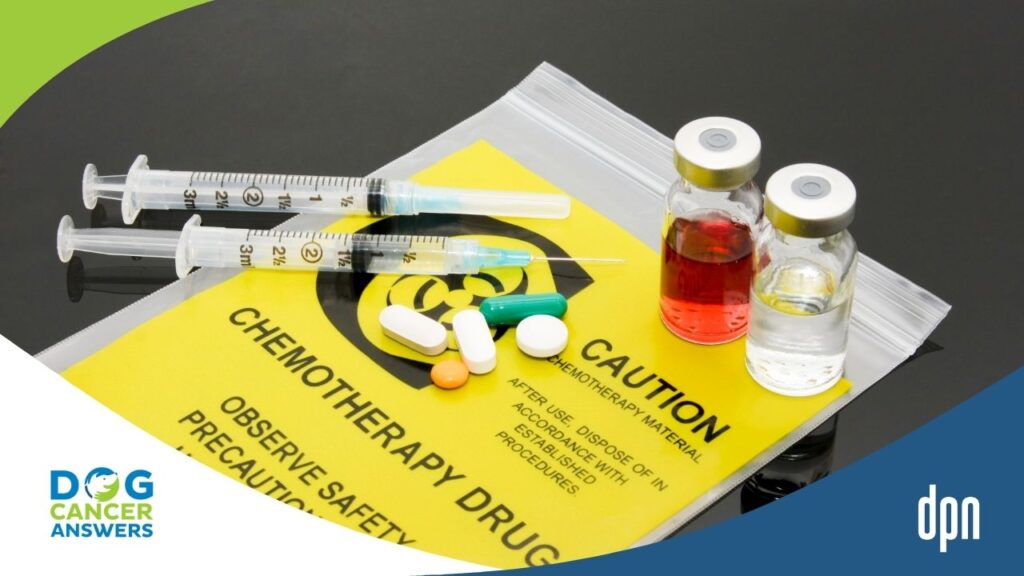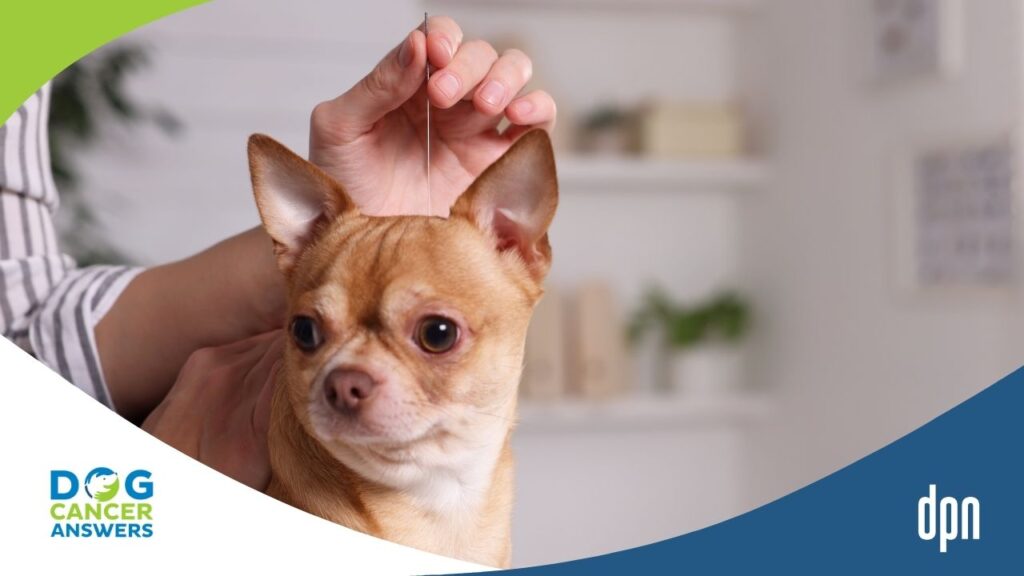EPISODE 139 | RELEASED November 1, 2021
What to Expect the Day of Your Dog’s Surgery | Kate Basedow Deep Dive
Ack! It’s surgery day! Veterinary technician Kate Basedow has some tips and insights.
SHOW NOTES
Your dog having surgery can be stressful, and knowing what to expect on the day of your dog’s surgery can give you peace of mind. Veterinary technician Kate Basedow goes over what a typical surgery day looks like, as well as what to bring with you when you drop off your dog … and when to expect a phone call with an update.
Set yourself and your dog up for success by remembering NOT to feed your dog breakfast before surgery and by arriving on time to the vet’s office. Factor in some time for paperwork, and if your dog has been seeing multiple vets, bring copies of records and recent bloodwork.
Many clinics will call when your dog is out of surgery to schedule a pickup time. Expect your dog to be tired and to have some patches of shaved hair. And don’t forget your Elizabethan collar (cone) or a body suit to protect the incision! Either the surgeon or a veterinary technician will go over your dog’s discharge instructions with you and provide you with written instructions on how to care for your dog after surgery.
Links & Resources Mentioned in Today’s Show:
Recommended Elizabethan collars (cones)*:
- Clear Custom Collar secured with Velcro, like the Supet Dog Cone
- ConTech ProCone Soft Recovery Collar
- The Original Comfy Cone
Recommended Surgery Suit*:
*As an Amazon Associate we may earn from qualifying purchases.
[00:00:00] >> James Jacobson: Today’s show is sponsored by the Dog Cancer Survival Guide, the best-selling book that helps you help your dog with cancer. Join the companion private support group at DogCancerSupport.com and get the email newsletter at DogCancerNews.com.
[00:00:19] >> Kate Basedow: So a common question that we’ll get from some owners is why can’t I come in with my dog and stay with her until she’s under and goes into the OR. There’s two big reasons that that can’t be accommodated. One is safety and the other is privacy. For safety, it’s a hospital. There are needles, there are sharp tools, there are drugs, and some of which are controlled substances, and it is not safe for someone who’s not trained to be hanging out in the vet hospital as everyone’s trying to get their work done.
[00:00:59] >> Announcer: Welcome to Dog Cancer Answers, where we help you help your dog with cancer.
Here’s your host, James Jacobson.
[00:01:07] >> James Jacobson: Hello friends. Thanks for joining us today. Today is part two of our series on how to optimize your dog’s success if he or she is having surgery, whether for cancer or any other type of surgery. Today, we are focusing on what to do on the day of surgery to ensure the best outcome. And joining us once again is our associate producer and licensed veterinary technician, Kate Basedow. Kate, thanks for being with us.
[00:01:39] >> Kate Basedow: You’re very welcome. Happy to be here.
[00:01:41] >> James Jacobson: On the last episode, we talked about what to do before you are going into surgery, but this one is about the day of. So what do you do, it’s the morning, what happens?
[00:01:55] >> Kate Basedow: Most important thing is no breakfast for your dog on the day of surgery.
It’s really hard, yup, when you’ve got those puppy dog eyes, and I, with my dogs, I usually just don’t feed anyone because if I fed one dog the other one would be like, what is this? And throw a fit. So no one gets breakfast on the day.
[00:02:17] >> James Jacobson: Be mean to all of your pets.
[00:02:18] >> Kate Basedow: Yup. We all suffer together. And then…
[00:02:21] >> James Jacobson: If Clarence has to go in for surgery, and no one’s getting breakfast.
[00:02:24] >> Kate Basedow: Exactly.
[00:02:24] >> James Jacobson: At least until we leave in the car.
[00:02:29] >> Kate Basedow: Yup. And show up on time. If your veterinary team asked you to drop off between eight and eight thirty, plan on being there between eight and eight thirty. Um, sometimes you’re able to get your surgery admission paperwork ahead of time, and so you can review that at home and have it all filled out and ready to go.
If you’re gonna need to fill out paperwork on the day of the procedure, plan some time for that. Surgery drop-offs are not as quick as if you’re doing a drop-off appointment for something basic like vaccines or just checking out an ear infection. Modern anesthesia is very safe for the most part, but there are still a lot of risks and things that you need to be aware of, and that legally the veterinary team needs to be sure that you’re aware of. So expect to be filling out some paperwork and signing some forms saying that you give permission to the veterinary hospital to do surgery on your dog for this procedure. A lot of times that paperwork will also include things like any vaccines that they require your dog to be current on.
There’s also usually a note on fleas because a vet hospital infested by fleas is a really bad time for everyone. So-
[00:03:47] >> James Jacobson: the gift that keeps on giving, right?
[00:03:49] >> Kate Basedow: Yeah, so most clinics have a policy that if they see a flea, the dog gets a flea treatment. Usually the product called Capstar, which starts working pretty much immediately to kill all the fleas on your dog and is cleared from the body within four to six hours.
So it’s a nice way to just hit them hard and clear up the problem, but they don’t want to take any risk of having a pack of fleas infecting all of their patients. Um, other things that’ll be on that paperwork is a DNR form, do not resuscitate, where you can say whether or not you want your dog to undergo CPR if they do go under cardiac, go into cardiac arrest during the procedure.
And they’ll also want a phone number where you can be reached throughout the day, just in case something happens and they need to get in touch with you or to keep you updated as the day progresses.
[00:04:46] >> James Jacobson: Obviously you use a cell phone and is it a good idea to have like a backup person, if, if you’re not available, like, you know, call this number first and if I’m not available, then call this person?
[00:04:57] >> Kate Basedow: Yeah. Yes. Definitely. Because things happen. I live in a rural area where some people, their cell phone works when they’re in town at work, but when they’re at home, their phone doesn’t have service, so you need to call the home number. And sometimes phones don’t ring. I’ll have, my phone will be sitting right next to me and suddenly it’ll say, oh, you’ve got a voicemail.
And I’m like, what? It never rang. So it’s good to have backup plans.
[00:05:20] >> James Jacobson: Have back up. And make sure your phone is charged. These little things, you know, just are kind of obvious, but in the heat of having to deal with a dog with cancer, and then going in for surgery. You can forget these things. So these are good tips. What else?
[00:05:38] >> Kate Basedow: You can ask your, the veterinary technician or the veterinarian whoever’s doing the admission, how their usual surgery day routine is. Some clinics stagger appointments with surgeries, where the doctor might do a couple appointments, then do a couple surgeries and go back and forth. Other places lump surgical procedures.
If you’re going to a specialty clinic, most likely all that the surgeon is doing that day is surgeries. Um, some practices also, like the specialty clinic down in Albany, New York that does neurology, they do consult appointments in the morning and sometimes if your pet needs an MRI, they’ll do it the same day in the afternoon.
Usually with a surgery, it’ll be scheduled in advance unless it’s an emergency procedure.
[00:06:29] >> James Jacobson: And why does knowing how the vet does things at their practice, why is that important?
[00:06:34] >> Kate Basedow: It just gives you peace of mind so that you know when to expect the call that your dog is done. A lot of – some places will call you when your dog is going under, most don’t do that, they’ll usually call when your dog is waking up to say it’s done, they’re good, they’re waking up, everything went fine. Or we have these concerns, so it’s going to change the plan in this way, things like that. But, so it’s good to know if they’re gonna be doing the surgery in the morning or in the afternoon so that if the surgery is going to be at two o’clock in the afternoon, you aren’t stressing out all morning, where’s my phone call? Where’s my phone call?
[00:07:11] >> James Jacobson: You’ve described me. Yeah. So now I understand. So just to understand how they work so that you’re not like, they haven’t called this must be bad news. And that’s a question like, is this known, you know, if, if it’s going to be bad, they’re going to contact you.
They’re not going to save that call for the end of the day.
[00:07:28] >> Kate Basedow: Yeah. If something goes horribly wrong or is found that’s really unexpected in the middle of the procedure, they will call you right then. A lot of operating rooms have a phone in the OR so that the veterinarian can talk to you directly, or they’ll have a staff member call you and relay it that way.
[00:07:49] >> James Jacobson: Good stuff. What else do you got Kate?
[00:07:52] >> Kate Basedow: Um, so other things to expect on the day of the surgery, if you haven’t done pre-anesthetic blood work ahead of time, your veterinarian is definitely gonna recommend doing blood work that day. And that’s to make sure that your dog’s liver and kidneys are functioning normally and healthy and able to process the anesthesia.
If there are problems, sometimes small blips they’ll just change their drug protocol to make it a little easier on your dog. Or if there are big concerns on the blood work, they might choose to postpone the surgery. Also with dogs who have cancer, the veterinarian may want to do some x-rays or other imaging that morning to check for metastasis.
Cause if your dog is supposed to be having surgery to remove a lump in kind of an invasive place, but already has mets in his lungs, it might not be worth putting him through the surgery.
[00:08:46] >> James Jacobson: So surgery is, is, is that a pretty common thing for a dog? I mean, just to make sure that they know everything, they have the best eyes that they can by looking at the x-ray versus just before they go in.
[00:08:59] >> Kate Basedow: Yeah. Usually for a routine surgery, like a spay and neuter, they aren’t going to be doing x-rays ahead of time, but fairly often with dogs with cancer or suspected cancer, especially if it’s an older dog, the veterinarian will recommend doing some x-rays ahead of time to check out the lungs for any metastasis and also to check out the heart and make sure there aren’t any obvious problems there.
[00:09:23] >> James Jacobson: Great tips. Anything else?
[00:09:26] >> Kate Basedow: So things to bring with you as you, when you drop off your pet, are any medications that he’s on. This is both so that you for sure are telling your veterinarian everything that your dog is on, which is especially important if you’ve been seeing multiple specialists or got a second opinion somewhere and might have medications from multiple different vet clinics, or if your dog is getting surgery at a specialty clinic and they may or may not have already gotten the records from your regular vet. They should have, but things happen. So-
[00:09:59] >> James Jacobson: Does that include things like supplements? Like-
[00:10:02] >> Kate Basedow: Yes. Yup. Supplements are a good thing-
[00:10:05] >> James Jacobson: Because supplements can have a negative effect in surgery in terms of blood, right?
[00:10:09] >> Kate Basedow: Yeah, absolutely.
[00:10:10] >> James Jacobson: In terms of bleeding. Right?
[00:10:11] >> Kate Basedow: Mhm. So it’s good to know, for the surgeon to know, what supplements your dog is on ahead of time, and some supplements need to be stopped a week or two before surgery as well. Also, bring with you your dog’s cone or body suit so that it can be put on them right after the surgery to protect the incision. Because once you’ve paid all that money for a surgery, you don’t want your dog to rip open the incision and ruin it.
[00:10:38] >> James Jacobson: That’s always fun.
[00:10:39] >> Kate Basedow: Yup. And also bring with you a copy of your records and any blood work, especially if you have been seeing multiple vets, just to be absolutely sure that the surgeon has all the most up-to-date information.
[00:10:53] >> James Jacobson: And when you request that, are those records usually paper-based or are they electronic?
[00:10:59] >> Kate Basedow: It can vary. It used to always be paper-based, but more and more hospitals are starting to use email. And they’ll fax records between hospitals, but usually giving it to owners, it’ll either be a printout or they might send you an email.
[00:11:14] >> James Jacobson: And when you asked for records, it’s not just the veterinary notes, but also copies or electronic copies of x-rays and other, uh, and other things that they’ve done. So that, that could be helpful for the vet surgeon as well.
[00:11:29] >> Kate Basedow: Yep. You want all those goodies. And if blood work has been done recently or x-rays have been done recently at a different hospital, giving the surgeon that information means that they won’t have to repeat those things that day. Because if your dog just had x-rays two days ago at your regular vet, why pay for more, pay for the same x-rays to be taken by the surgeon?
[00:11:50] >> James Jacobson: Hey Kate, this is really good information. Let’s take a pause right here, take a break, and we’ll be back with more tips.
Do surgeons tend to plan out a surgery like the day of, or do they plan it before, or, I’m hoping that you’d say they don’t just chop in and then figure out what’s going on. They do do some planning, right?
[00:12:15] >> Kate Basedow: Oh yeah. They know what, where the lump is that they’re hoping to take out, unless of course it’s an exploratory surgery.
Exploratories are always a little bit of an adventure and sometimes you may not know what’s going to happen until you get in there, but they have a plan. And when your dog goes in and is put under anesthesia, the technician will shave the area around the incision. And this shaved area could be quite large and you might look and be like, oh my God, why is half my dog bald when he’s only got this three inch incision? And that is so that we can have a sterile field to work on. Because hair can trap bacteria and dirt and debris and everything, all kinds of things that you don’t want inside your dog’s incision or inside their body. So shave the area. And then do a scrub with a variety of antiseptics to get the skin as clean as possible.
[00:13:16] >> James Jacobson: And this is what the vet techs, this is what you had to do. So when you, when you were making that larger area, you weren’t just redesigning the hairdo. There was a, there’s a reason for the, the size of the, of the shaved area.
[00:13:27] >> Kate Basedow: Yes. Yep. You want the surgeon’s hands and tools to all be on a completely sterile field so that there isn’t any risk of infection or contamination.
[00:13:37] >> James Jacobson: And generally the hair grows back.
[00:13:39] >> Kate Basedow: Oh yeah. It’ll grow back. Might take a little while, depending on the area. Sometimes the first time the hair grows back, the texture might be a little different or the color might be a little different, but usually the next time your dog goes through a shed cycle, it’ll all go back to normal.
[00:13:54] >> James Jacobson: Yeah. And don’t worry, the other dogs won’t make fun of him.
[00:13:58] >> Kate Basedow: Eh, they might. But it’s okay.
[00:14:01] >> James Jacobson: They didn’t get breakfast anyway.
[00:14:03] >> Kate Basedow: Yeah. The other spot to expect to be shaved is on your dog’s front leg, where the catheter will be placed. And that again is for sterility because the technician or the veterinarian is going to be placing a catheter into your dog’s vein, so you don’t want bacteria or debris getting into the bloodstream. So shave that, we shave that area, scrub it up, and then place the catheter for that safety.
[00:14:29] >> James Jacobson: Does the catheter usually go in the left or the right leg or does it matter?
[00:14:34] >> Kate Basedow: Doesn’t matter. It usually is based on preference of the person placing the catheter or how the dog happens to be laying at the time or positioned in the kennel or on the floor, wherever they’re working. Um, but if the surgery is being done on one of the front legs, usually the catheter will be placed in the opposite leg because you don’t want the catheter to be in the way of the surgery.
[00:14:59] >> James Jacobson: Awesome. What else do you have for us Kate?
[00:15:02] >> Kate Basedow: So a common question that we’ll get from some owners is why can’t I come in with my dog and stay with her until she’s under and goes in the OR. And a large part of that is, there’s two big reasons that that can’t be accommodated. One is safety, and the other is privacy. For safety, it’s a hospital. There are needles, there are sharp tools, there are drugs, and some of which are controlled substances, and it is not safe for someone who’s not trained to be hanging out in the vet hospital as everyone’s trying to get their work done. Also not all dogs are friendly, not all dogs like going to the vet.
So it’s important to have trained personnel restraining the dogs and working with them to prevent anyone from getting bitten or hurt in another way. And on privacy, it’s the privacy of other pets and owners. Um, some people are very stressed about their dog’s medical problems and don’t really want a ton of strangers looking at their pet not feeling good or watching their pet’s surgery.
So try to keep everything private and safe for everybody.
[00:16:22] >> James Jacobson: Those are some good reasons.
[00:16:24] >> Kate Basedow: And things to expect for the end of the day, your, either the surgeon or the technician will go over the discharge instructions with you. So they’ll tell you, go over exactly what happened, any medications that your dog needs to be on.
If you’ve opted to send out a histopathology sample – so sending out either a biopsy, chunk of the tumor, or the entire tumor to the lab to be analyzed – they’ll go over that with you and let you know when to expect results back. Usually results for a histo are going to take seven to ten business days because the tumor has to get to the lab, it needs to be chopped up and prepared, put on slides, they do a couple of different stains to be able to observe different characteristics of the tissue, and then the pathologist has to write up that report and send it back to your vet. So they’ll let you know when to expect those results. And they’ll also go over the post-op care with you at that point.
Always make sure that they give you a written copy of all of that. Because no matter how well we think we’re paying attention, our dog’s just, your dog just had surgery. You’re stressed, you’re relieved that they made it through the procedure fine. You’re not really paying attention and you’re going to forget things.
You’re going to get home and get your dog out of the car and go wait a minute, when am I supposed to give these medications? So always they, most vet clinics will just automatically give you a written copy of the discharge instructions, but always ask for a written copy if you aren’t handed one so that you have all the information laid out and know which medications need to be given when, how long your dog needs to be on leash walks only or restricted activity, and when to expect different things to happen through the recovery process.
[00:18:15] >> James Jacobson: Let’s talk a little bit about when you do pick up your dog and they go back after they’ve given you all this information and they go back and they present your dog. You’re a little anxious, you’re just like, I just want to see my dog.
And then they bring you this animal that looks a lot different. Maybe the tongue’s hanging out. What are some of the things that, if you never had a dog under anesthesia that, that you can look forward to, uh, when, when you see your dog?
[00:18:43] >> Kate Basedow: Yup. Different dogs handle anesthesia differently. Certainly, usually young, healthy dogs go through anesthesia, no problem. Some dogs after a spay or neuter are bouncing out the door ready to go play, and it’s like nothing happened. Trying to keep those quiet through the healing period is a nightmare. But older dogs, or dogs with a lot of health problems, they’re usually not feeling too great afterward.
I mean, they just had anesthesia and sur-, a big surgery. So of course they’re not going to feel their best. They’ll often be a little groggy, they may stumble, and once you get home, get them home, they’re probably going to take a nice big long nap. Because even though most of the day at the vet hospital for a surgery is hanging out in a cage or a kennel, it’s not good rest. Like, no one, no dog is really truly relaxed hanging out in the vet hospital. So they’re going to want to catch up on some sleep at home.
[00:19:41] >> James Jacobson: And they can be a little loopy too. I mean, depending on the anesthesia, and again, how your dog tolerates it, uh, I’ve seen my dogs both a little loopy and, there’s no other way to describe it than pissed off. Like, everything was fine, Dad, and then what did you do? And I I’ve gotten the cold shoulder, more than once, after bringing my dog in for, uh, a surgical procedure.
[00:20:11] >> Kate Basedow: Oh yeah. Definitely, some of them hold a grudge. My oldest dog, when she got spayed, she was 13 years old, which is kind of a long roundabout story, but she was not happy with us.
And she was cranky for a good three to four days and then she decided that maybe she could forgive us. Um, my younger dog was ready to go after her procedure and I actually got a call to come pick her up early because she was barking and driving everyone nuts.
[00:20:42] >> James Jacobson: Well, at least she didn’t have fleas. Uh, so really it’s dependent on the dog and I guess the dog’s disposition, but if you think your dog might be that way, just come, go in aware, because that seems to be, uh, an important thing versus being shocked, like, is this not the dog that I dropped off?
[00:21:01] >> Kate Basedow: Yeah. The majority of them are pretty tired and a little groggy right after surgery. And usually they’ll sleep a lot that first night. The next day, they’re usually feeling a lot better, and usually by day two or three after the surgery, they’re pretty much back to themselves .
[00:21:17] >> James Jacobson: And they’ll forgive you.
[00:21:19] >> Kate Basedow: Absolutely.
[00:21:20] >> James Jacobson: Even if they do have to wear the cone of shame. Any other tips for the day of to ensure success?
[00:21:28] >> Kate Basedow: That’s pretty much it. Just being prepared with your paperwork, um, find out what the timeline of the day is going to look like so that you know what to expect and when to expect a call, have any medications and blood work results with you when you arrive, and bring your cone, the cone or the body suit so that your dog already has that when the surgery is over.
[00:21:52] >> James Jacobson: Awesome. Kate Basedow, thank you so much for being with us. And thank you for joining us today for Dog Cancer Answers. This is part two of our series on surgery.
Part three, Kate will go through the things that you can do to ensure success after surgery. So please join us for that episode of Dog Cancer Answers. And please check out our entire back catalog of podcasts and videos. You can find that on our website at DogCancerAnswers.com. Of course, in the show notes for today’s episode, there’s are lots of helpful links and useful resources that you can find.
But one of the ones that I want to call your attention to is our private Facebook community, where there are a lot of dog lovers going through the process of helping their dog with cancer. And it’s an amazing support group, uh, highly vetted and, uh, let’s just say, well moderated, and I encourage you to check out that. It is an amazing group and of course it’s free.
Just go to the web, that you can type in the URL, DogCancerSupport.com and it’ll take you there or just do a search inside of Facebook for Dog Cancer Support. Please also subscribe to our newsletter at DogCancerNews.com and you will get – three times a week! – newsletters that help you deal with this process and help your dog through the process of dog cancer.
I want to thank you for joining us today on Dog Cancer Answers. I’m James Jacobson. On behalf of everyone here at Dog Podcast Network, thank you for joining us and I wish you and your dog, a very warm, Aloha..
[00:23:37] >> Announcer: Thank you for listening to Dog Cancer Answers. If you’d like to connect, please visit our website at DogCancerAnswers.com or call our Listener Line at (808) 868-3200. And here’s a friendly reminder that you probably already know: this podcast is provided for informational and educational purposes only.
It’s not meant to take the place of the advice you receive from your dog’s veterinarian. Only veterinarians who examine your dog can give you veterinary advice or diagnose your dog’s medical condition. Your reliance on the information you hear on this podcast is solely at your own risk. If your dog has a specific health problem, contact your veterinarian.
Also, please keep in mind that veterinary information can change rapidly. Therefore, some information may be out of date. Dog Cancer Answers is a presentation of Maui Media in association with Dog Podcast Network.
Hosted By
SUBSCRIBE ON YOUR FAVORITE PLATFORM
Topics
Editor's Picks
CATEGORY

